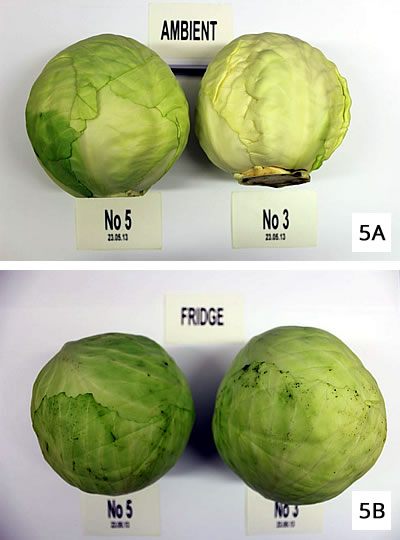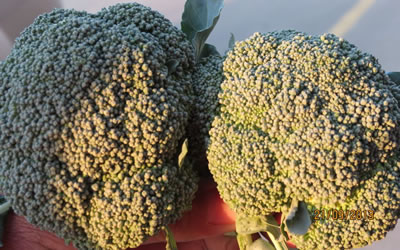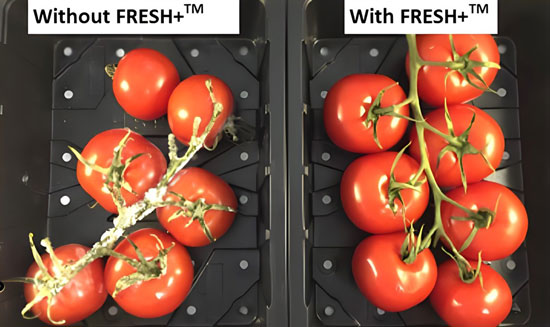Improved Postharvest Quality
Removing ethylene from fresh produce storage areas is proven to:
- Decrease postharvest losses by 2-25% depending on the commodity
- Extend shelf life of fresh fruit, vegetables and floral
- Increase the value of fresh produce at its destination.
Enhanced Food Safety
With FRESH+™™, the UV-C germicidal lamps inside provide an addition layer of food-safety protection by reducing contamination from airborne microorganisms that cause illness and accelerate decay of fresh produce.
FRESH+™ combines UV-C with optional HEPA filtration on some models for extra mold control. It is important to size your UV system for the proper dose and residence time. Fresh Plus International's expert engineers can design a system that meets your needs. LEARN MORE About UV-C HERE.
Safe for Organic Produce
FRESH+™ Ethylene Scrubbers' innovative PCO+UV technology does not require any chemicals or leave any residue, so it is completely safe for both conventional and organic produce.
Damage from ethylene is cumulative. We can help you evaluate your supply chain and get the most out of your investment.
Call us today!
Experts around the world have long recognized the harmful effects of ethylene:
- Acceleration of senescence, ripening, softening, and discoloration (including but not limited to apples, pears, bananas, avocados, kiwi, apricots, peaches, nectarines)
- Russet spotting (lettuce), yellowing (broccoli and greens), bitterness (carrots and parsnips), sprouting (potatoes), and toughness (asparagus)
- Abscission (floral)
Most Common Sources of Excess Ethylene Gas:
- Excess ethylene gas from ripening rooms
- Damaged or decaying produce
- Combustion Sources
- Ethylene produced during the normal ripening process (climacteric fruit)
Postharvest experts recommend maintaining ethylene levels < 1 ppm for most items and even lower for some items (kiwi, floral, tomatoes). Contact us for site-specific recommendations.
Produce Stays Fresher with the Help of FRESH+™ Ethylene Scrubbers


FRESH+™ greatly improved opening and minimized senescence
The cut flowers were stored overnight in the dark at 6°C and then for a further 5 days at 20°C with 12h light and 12h dark periods to replicate a storage and then shop environment with and without FRESH+™ Ethylene Scrubbers. The differences between treatments were immediately apparent at the end of the experiment with cut flowers in the low ethylene environment showing greatly improved opening and minimal senescence on floral organs and vegetative tissues (Fig. 4, NB arrow showing senescent areas untreated control). The flowers in the control treatment showed classic symptoms of ethylene damage.

Eight (8) weeks after removal from Cold Storage, 9 months from harvest. Cabbage #5 with FRESH+™ Ethylene Scrubber Treatment. Cabbage #3 without FRESH+™ Ethylene Scrubber Treatment (Control).
The freshness and shelf life of stored cabbages are greatly enhanced. Trials with stored white cabbage have demonstrated that yellowing of the product in store was substantially decreased and the product retained this appearance post storage. Significant differences in the color of representative samples of the raw product (white cabbage) directly after removal from cold storage were noted.
Following standard commercial practice the cabbages were then peeled in preparation for supply to the retailer and kept for a further 41 days of shelf life at (Fig.5A) ambient temperature or at (Fig. 5B) 4°C. The product in cold store with FRESH+™ is shown on the left and the greater extent of yellowing in the material from the store without FRESH+™ Ethylene Scrubbers (right) is apparent both directly after removal from store and then also during the shelf life tests.

'Piccolo' tomato variety stored with FRESH+™ Ethylene Scrubbers (R) and without (L) over 7 week period.

Broccoli in storage for 28 days with no yellowing.

Comparison of Apple Hardness (psi) April-October in CA storage






